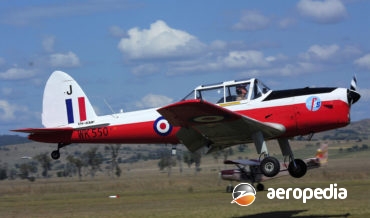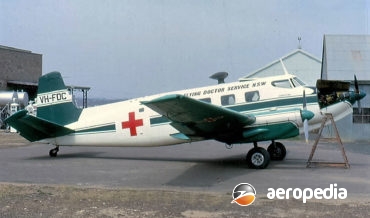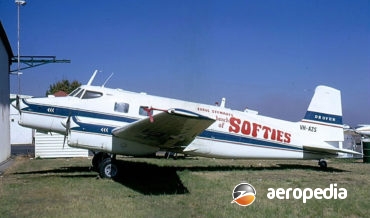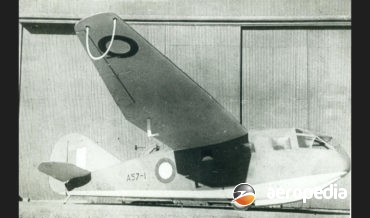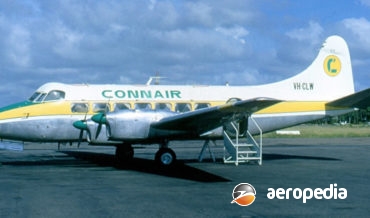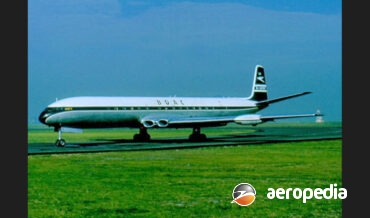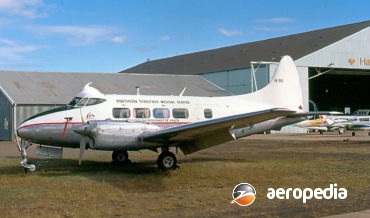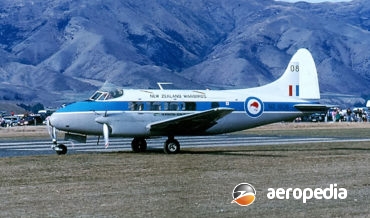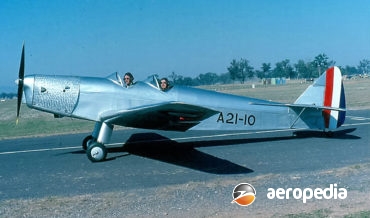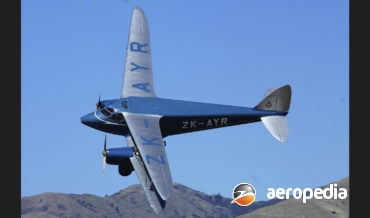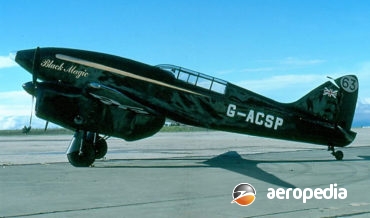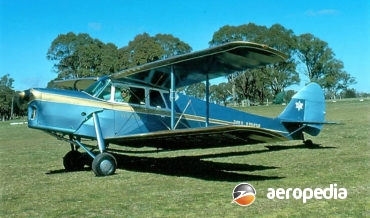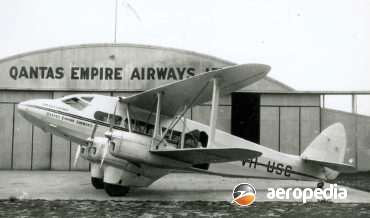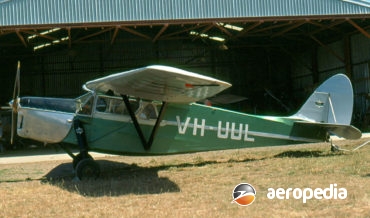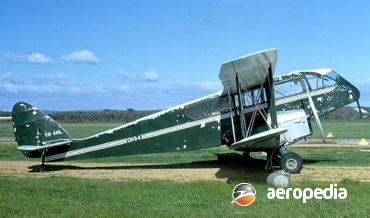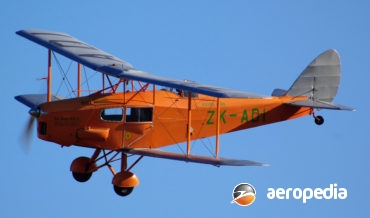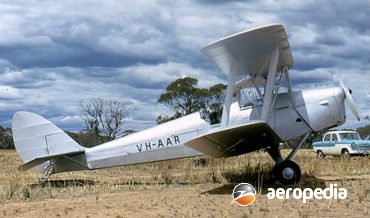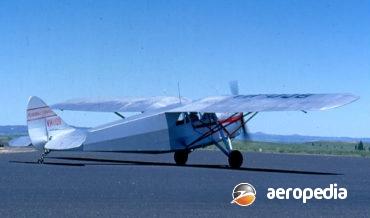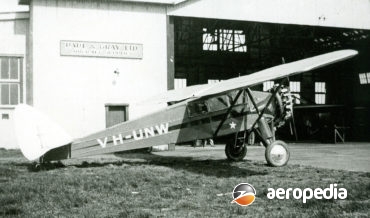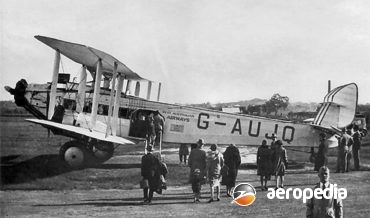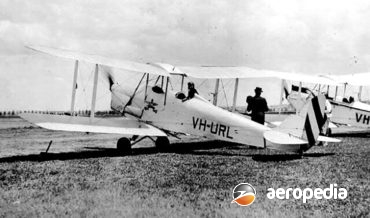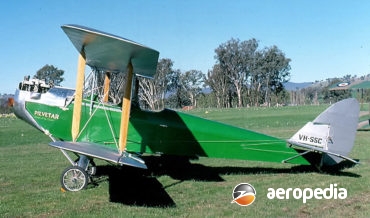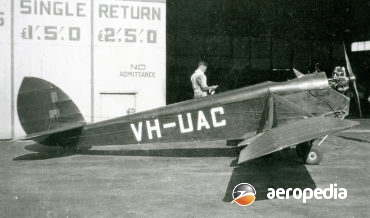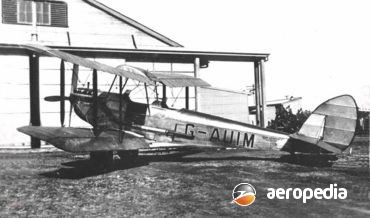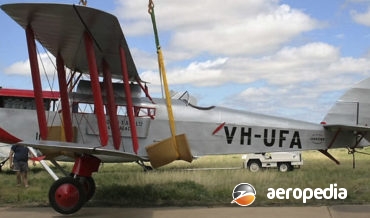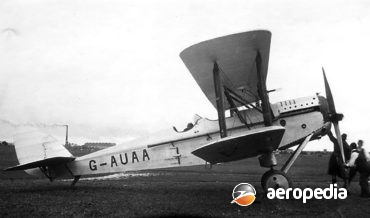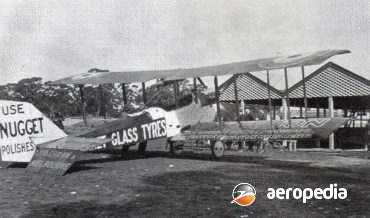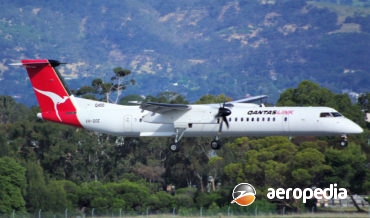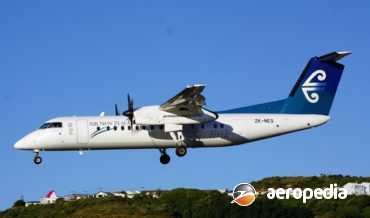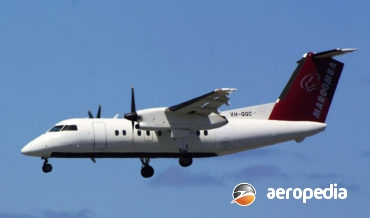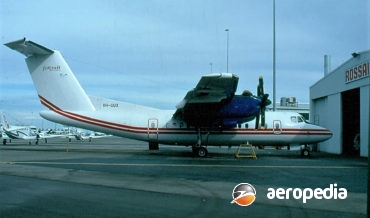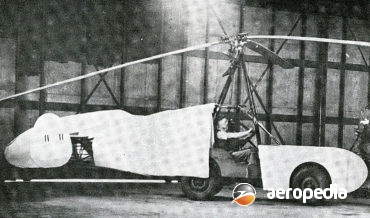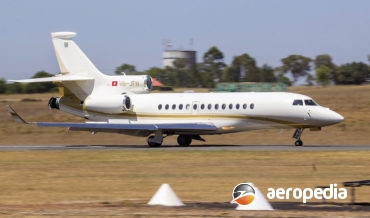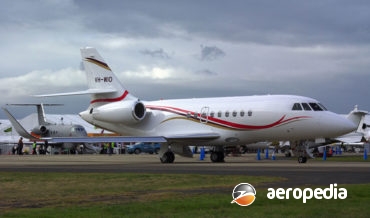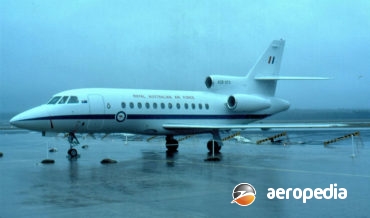All Contents
Contents
The prototype Chipmunk (CF-DIO-X), which was designed by W J Jakimiuk for de Havilland Canada, was flown for the first time on 22 May 1946.
David C. Eyre
- May 8, 2019
Following accidents to the Gipsy power Drovers in New Guinea the Australian Department of Civil Aviation placed restrictions on the operation of the type, the 11 aircraft then in service being grounded on 11 September 1952 but, after some modifications were made, the grounding was lifted.
David C. Eyre
- May 8, 2019
The Drover was designed in the 1940s by the Australian section of the de Havilland Company as a simple, light but sturdy aircraft capable of carrying freight and passengers.
David C. Eyre
- May 8, 2019
In March 1942 the Department of Air published a requirement for 126 troop transport gliders for the RAAF, and a specification was issued for a seven-seat prototype of the glider for development and testing.
David C. Eyre
- May 8, 2019
Basically a development of the de Havilland Dove, and originally known as the DH-114, the Heron, during the main part of its production life, became known as the Hawker Siddeley Heron when de Havilland became part of the Hawker Siddeley Group in the United Kingdom
David C. Eyre
- May 8, 2019
Design of the Comet commenced in 1946, at that time it being a 44 passenger aircraft with a range of 3,540 km (2,200 miles) powered by four 5,000 lbst de Havilland Ghost 50 turbojet engines.
David C. Eyre
- May 8, 2019
The Dove was designed and the end of World War II to replace the superseded DH-89 Dragon Rapide.
David C. Eyre
- May 8, 2019
The Devon was a development of the de Havilland Dove for military operation, the prototype of the Dove (G-AGPJ) having first flown at Hatfield on 25 September 1945 in civil guise.
David C. Eyre
- May 8, 2019
Designed as a successor to the Moth biplane series of light aircraft, the Moth Minor had a similar performance to the Tiger Moth, although it had far less power.
David C. Eyre
- May 8, 2019
The Dragonfly, the prototype of which (E-2 c/n 7500 – later G-ADNA) was first flown on 12 August 1935, was designed as a twin-engine business and executive transport seating five.
David C. Eyre
- May 8, 2019
In 1933 de Havilland designed a faster and more comfortable version of the DH.84 Dragon and, when the prototype (E-4, later CH-287, HB-ARA, HB-APA – c/n 6250) was flown at Stag Lane by Hubert Broad on 17 April 1934, it was known as the DH.89 Dragon Six.
David C. Eyre
- May 8, 2019
The story of the DH.88 Comet series of racing aircraft is well known and has been told many times.
David C. Eyre
- May 8, 2019
The DH.87, which was designed and built in 1937 as a replacement for the DH.60 Gipsy Moth series, had a Gipsy Major engine and side-by-side seating.
David C. Eyre
- May 8, 2019
The DH-86 (known as the Express Air Liner) was designed and built in four months in 1933 to meet a specification produced by the Australian Government for a fast, economical ten-passenger airliner to serve the route from Australia to Singapore.
David C. Eyre
- May 8, 2019
Leopard Moth appeared in 1933 as a successor to the DH 80 Puss Moth. The prototype was flown for the first time at Stag Lane, Edgeware, UK, on 27 May 1933 with Class B marking E1, later becoming G-ACHD (c/n 7000), and it became the personal aircraft of Capt de
David C. Eyre
- May 8, 2019
The DH.84 Dragon was introduced to the de Havilland range of light aircraft in 1933, the prototype (E9 - c/n 6000 – later G-ACAN) having flown for the first time on 12 November 1932, later going to Hillman Airways Ltd as Maylands. Designed by A E Hagg, it was a
David C. Eyre
- May 8, 2019
Designed by A E Hagg as a low-cost, light transport, the prototype DH.83 Fox Moth (G-ABUO – c/n 4000) flew for the first time in March 1932.
David C. Eyre
- May 8, 2019
The design of the DH.82 emanated from the DH.60 series. Basically, the DH.82 was developed from the DH.60T Tiger Moth, which was a DH.60 with a Gipsy 3 engine, re-positioned centre-section struts ahead of the front cockpit, and an altered centre of gravity achieved by giving the mainplanes a 48-cm
David C. Eyre
- May 8, 2019
The prototype of the Puss Moth, the DH.80, with the test registration E-1 (later G-AAHZ – c/n 396) flew for the first time at de Havilland’s aerodrome at Stag Lane on 9 September 1929.
David C. Eyre
- May 8, 2019
The DH.75 Hawk Moth was an attempt by de Havilland to develop an aircraft which provided the comfort one usually associated with a ‘good motor car’.
David C. Eyre
- May 8, 2019
The DH.71 Tiger Moth was built in secrecy at Stag Lane in 1927 for high-speed research, mainly to act as a flying test-bed for a new series of engines being designed by Major F B Halford
David C. Eyre
- May 8, 2019
In 1925 de Havilland designed a large biplane powered by three air-cooled radial engines known as the DH.66.
David C. Eyre
- May 8, 2019
The DH.61 was produced by de Havilland in 1927 as a “six-eight passenger machine for Australia”
David C. Eyre
- May 8, 2019
In the late 1920s de Havilland was working towards the development of a light-four-cylinder in-line engine for aviation use and in 1931 designed a new variant of the upright Gipsy III engine which ran inverted
David C. Eyre
- May 8, 2019
In the late 1920s de Havilland was looking at building its own engine for its light biplanes and to this end produced the Gipsy engine initially rated at 75-kw (100-hp) designed by Major F B Halford
David C. Eyre
- May 8, 2019
The prototype DH.60 (G-EBKT – c/n 168) was flown for the first time on 22 February 1925 by Geoffrey de Havilland
David C. Eyre
- May 8, 2019
The DH.53 was a low-wing monoplane and was probably the first really practical ultra-light aeroplane.
David C. Eyre
- May 8, 2019
The DH.51 was produced by the de Havilland Aircraft Co Ltd of Stag Lane, Edgware, Middlesex as a two/three seat biplane ‘of low cost and economical in running
David C. Eyre
- May 8, 2019
The DH.50 was designed as a successor to the DH.4 and DH.9 to meet the requirement of operators after World War I for a cost effective passenger carrying aircraft providing reliability and range.
David C. Eyre
- May 8, 2019
In October 1921 Mr Alan S Butler approached the de Havilland Company with a view to it building an aircraft to his specifications
David C. Eyre
- May 8, 2019
In 1916 the Royal Flying Corps required a trainer and to meet this requirement Geoffrey de Havilland designed the DH.6, a biplane of simple construction, easy to produce, easy to fly and maintain, and easy to repair.
David C. Eyre
- May 8, 2019
The Q400 was conceived by Bombardier in 1990, the type being officially launched in June 1995.
David C. Eyre
- May 8, 2019
A new series of the Dash-8 known as the Q300 was announced in 1985 and this model had the fuselage stretched by using two fuselage plugs, one forward and one aft of the wing, increasing length by 3.43 m (11 ft 3 in).
David C. Eyre
- May 8, 2019
The Dash-8 is one of a long-line of highly successful STOL military and commercial transports produced by the Canadian company at Downsview, Ontario.
David C. Eyre
- May 8, 2019
For many years the Canadian de Havilland company has specialised in designing and building short take-off and landing (STOL) aircraft for a variety of uses, but mainly for the utility role
David C. Eyre
- May 8, 2019
Known as Project Skyward, work upon which commenced during World War II in March 1943, the DCA Fleep, as it was known, was a conversion of a Willys 4 x 4 ¼-ton Jeep to accept a gyrocopter head so it could be flown to battle areas
David C. Eyre
- May 8, 2019
The Davis DA-2 is a two-seat side-by-side low-wing sporting monoplane fitted with an all-moving VEE-tail having an included angle of 100 degrees
David C. Eyre
- May 8, 2019
The Falcon X was introduced to the market in 2005 at the Paris Air Show as a large-cabin, long-range business jet by Dassault and since its first flight on 5 May 2005 has been popular, with more than 200 examples delivered
David C. Eyre
- May 8, 2019
The Falcon 2000 was first announced at the Paris Air Show at Le Bourget in June 1988 (as the Falcon X) as a new model in the company’s range of business jets, to become a replacement for the 20 and 200 series
David C. Eyre
- May 8, 2019
On 27 May 1983 Dassault-Breguet announced a programme to develop an intercontinental three-turbofan executive transport to be known as the Mystere or Falcon 900
David C. Eyre
- May 8, 2019
Recent Comments
Archives
Categories
- No categories
Categories
- No categories
Latest Posts
Newsletter

